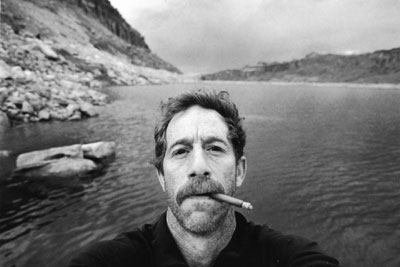
Bob Kolbrener's passion for fine art black
and white analogue photography began in 1968
when he innocently wandered into Yosemite National
Park and the Best Studio, home to Ansel Adams.
Having been an amateur photographer for five
years prior to this time, Kolbrener was overwhelmed
with the magnificence of the prints and the
grand proportions of the images hanging before
him. The following year, he enrolled in Adams'
workshop and continued to hone his skills over
the next eight years. In 1977, Ansel Adams invited
Kolbrener to be an instructor with Yousuf Karsh
at Adams' Yosemite workshop.
Kolbrener states: "When I think
about Ansel Adams and all that he represented,
I think of the word BIG. From his physical stature
and presence to his imagery, to his very large
prints, the Ansel Adams greatness, for me, was
always larger than life!”
Born in St. Louis, Missouri in 1942,
Kolbrener started out, after college, in the
retail clothing business. In 1964, he began
photographing as a hobby. After studying with
Adams for eight years, he became a teaching
assistant for the “Master”, working
alongside the well-known portraitist Yousuf
Karsh. By this time, Kolbrener had begun his
ongoing commercial photography business in St.
Louis. In 1993, Bob Kolbrener was honored with
a major museum exhibition at the venerable St.
Louis Art Museum. Six years ago, Kolbrener and
his wife and model, Sharon, moved to the American
West.
"Kolbrener feels that chance favors the
prepared mind. Traveling throughout the Great
American West, his ongoing series of epic, landscape
photographs exemplifies the way he feels about
his photography: celebration! The photographer
says that a photograph without emotion is pointless,
but too much emotion can be a detriment to clear
vision. His images are the result of the balance
between aesthetic decision-making and technical
expertise, when he is confronted with the exciting,
ephemeral events of nature. What is unusual
about his photography is that this work calls
for the reader to see an unusual sign…and
then respond to it.
More than thirty years ago he made a commitment
to continue in the Ansel Adams tradition of
"straight" photography. He never wavered
from this. All of his photographs are made in
the Great American West using medium and large
format 8x10 cameras. He says that he prints
"the old fashioned way" using fiber
based paper, tray processing and selenium toner.
His goal has always been, and continues to be,
to produce prints which truly celebrate those
most exciting, ephemeral events of nature!"